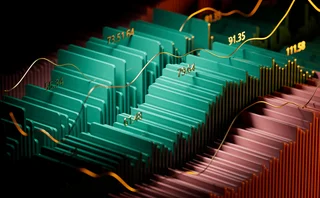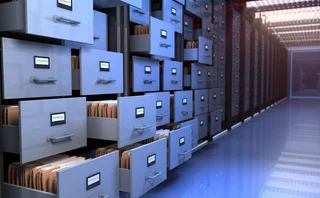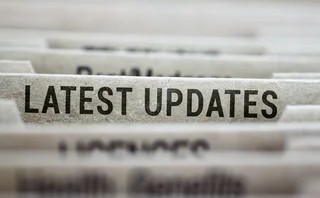Digital Asset Opens Smart Contract Language to Other Blockchains
VMware blockchain and Hyperledger Sawtooth begin support of DAML on their platforms.

Digital Asset is integrating its newly open-sourced DAML programming language with two external blockchain platforms as it further opens up its features.
The company announced that VMware blockchain platform and Hyperledger Sawtooth will now support DAML, allowing users of those platforms to build smart contracts with DAML’s privacy features.
It is the first time DAML, a functional programming language which was previously only available for Digital Asset blockchain projects, is being made available to a platform other than its own.
Chris Clason, director of strategic alliances at Digital Asset, says the idea is to offer more options to users to pick the right smart contract-language for their needs.
“Many of our target clients were already on the VMware platform, and we wanted to provide the option for them to play with the language on the blockchain they already use,” Clason says. “Clients already have the choice of which blockchain they use and putting DAML on top of that means they can also choose which smart-contract language is best for the use case that they need.”
VMware established a blockchain so that people already using VMware’s tools can accelerate their adoption of blockchain technology and applications.
Clason adds that since open sourcing DAML, the company wanted to partner with another open source blockchain. Fortunately, he says, users of the open source Hyperledger Sawtooth saw potential in using DAML to bring in more financial services applications to the platform, and the engineering between the platform and the language matched well.
Digital Asset is in talks with other blockchain providers and says it sees keen interest.
Digital Asset made DAML’s software development kit (SDK) available to a beta group of developers last year, and will next month release an open-source integration toolkit designed to enable integration with third-party blockchain platforms.
Clason says opening up smart-contract languages is just one part of a move in the industry to make technology more modular, offering options between the many blockchains available.
“I do think that multiple platforms are the way to go. As the industry matures, we’re going to see these building blocks to evolve into a more modular industry,” he says. “Much like what’s happened with containers and is currently happening with the cloud, we’re going to see a choice of languages and platforms.”
Digital Asset previously announced that it is partnering with the International Swaps and Derivatives Association (Isda) for an open-source reference code library to push adoption of Isda’s Common Domain Model, which aims to automate and mechanize lifecycle events in derivatives trades.
Only users who have a paid subscription or are part of a corporate subscription are able to print or copy content.
To access these options, along with all other subscription benefits, please contact info@waterstechnology.com or view our subscription options here: http://subscriptions.waterstechnology.com/subscribe
You are currently unable to print this content. Please contact info@waterstechnology.com to find out more.
You are currently unable to copy this content. Please contact info@waterstechnology.com to find out more.
Copyright Infopro Digital Limited. All rights reserved.
As outlined in our terms and conditions, https://www.infopro-digital.com/terms-and-conditions/subscriptions/ (point 2.4), printing is limited to a single copy.
If you would like to purchase additional rights please email info@waterstechnology.com
Copyright Infopro Digital Limited. All rights reserved.
You may share this content using our article tools. As outlined in our terms and conditions, https://www.infopro-digital.com/terms-and-conditions/subscriptions/ (clause 2.4), an Authorised User may only make one copy of the materials for their own personal use. You must also comply with the restrictions in clause 2.5.
If you would like to purchase additional rights please email info@waterstechnology.com
More on Trading Tech
Recent volatility highlights tech’s vital role in fixed income pricing
MarketAxess’ Julien Alexandre discusses how cutting-edge technology is transforming pricing and execution in the fixed income market amid periodic bouts of volatility
Banks fret over vendor contracts as Dora deadline looms
Thousands of vendor contracts will need repapering to comply with EU’s new digital resilience rules
Where have all the exchange platform providers gone?
The IMD Wrap: Running an exchange is a profitable business. The margins on market data sales alone can be staggering. And since every exchange needs a reliable and efficient exchange technology stack, Max asks why more vendors aren’t diving into this space.
This Week: Trading Technologies completes ANS deal; State Street; Equinix; and more
A summary of the latest financial technology news.
Interactive Brokers looks beyond US borders for growth opportunities
As retail trading has grown in volume and importance, Interactive Brokers and others are expanding international offerings and marketing abroad.
JP Morgan’s goal of STP in loans materializes on Versana’s platform
The accomplishment highlights the budding digitization of private credit, though it’s still a long road ahead.
As data volumes explode, expect more outages
Waters Wrap: At least for those unprepared—though preparation is no easy task—says Anthony.
This Week: ICE Bonds and MarketAxess plan to connect liquidity networks, TS Imagine, Bloomberg, and more
A summary of the latest financial technology news.







